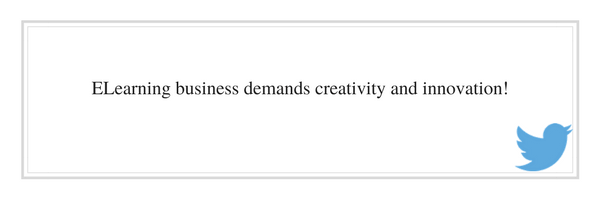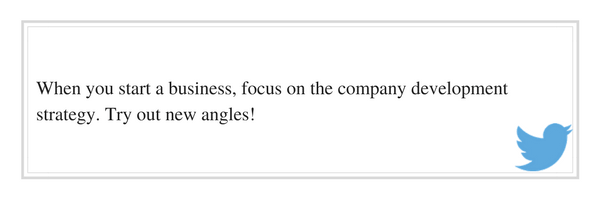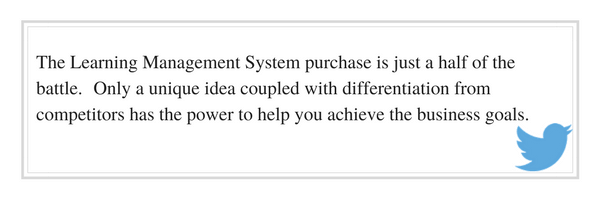It’s not so far in the dim distant past that no one thought of studying online, now it is hard to come by a person who has never taken an online course. ELearning, thanks to its flexibility, affordable price, mobility and effectiveness, finds more and more adherents all over the world.
Not surprisingly, the markets of online education and training are tremendously growing. According to the Strategic Assessment and Forecast 2017-2022, the global eLearning market is expected to reach $275.10 billion by 2022 (by comparison, in 2014 the size of the market was $165,36 billion) [source]..
With the eLearning industry projected growth entering the eLearning field seems to be a good idea, don’t you think so?
In this article we will tell you about different eLearning business models and provide examples of successful eLearning startups and businesses whose steps you can follow to take a piece of the eLearning market pie.
So, let’s start.
How to Enter the ELearning Field?
The eLearning field, one way or another, is all about online courses, whether we are talking about academic institutions looking for ways to reach out to modern learners, corporate businesses trying to educate employees to cope with the 21st-century challenges or entrepreneurs, online trainers and teachers tending to sell their knowledge online.
Which means that you can either enter the eLearning market by launching your own online courses business or by providing services to other businesses in your industry (eLearning content and course development, eLearning design, eLearning solutions delivery etc.).
Let’s start with online teaching business options:
Online teaching business options come in the following variations:
- Being an online instructor in an educational institution;
- Independent online teaching;
- Creating content for universities or other teachers;
- Proving open courses, building MOOC platforms;
- Giving education for free and generating donations.
Being an online instructor in an educational institution
Traditional educational institutions offer online degree programs to reach out to working and always-on-the-go students who cannot attend lectures on campus.
Not to mention that online education opens doors to non-regional students and the students living on a shoestring since distant learning is much more affordable than a traditional one.
If you have teaching experience that you can translate into the online learning environment and are comfortable with technology, becoming an online instructor in an educational institution is a good career option.
Further reading:
How to Get Started with Teaching Online – Interview with Liz Hardy
How to Start a Career in the ELearning Field
Independent Online Teaching
An alternative to being a full-time university/college online instructor is independent online teaching.
To earn income as an independent online teacher you can either teach online using Email, Skype, Google Hangouts, and Google Drive or teach through online teaching platforms.
The first approach is well suited for beginners who don’t have a lot of online clientele. When the amount of students gets bigger managing an “online school”, providing learners with materials and giving timely feedback gets trickier. Then, the second approach comes.
The most famous examples of online courses marketplaces (online platforms where individual teachers can sign up and teach online) are Edmodo, Schoology, My Private Teacher and Teachable. The services allow teachers to sign up for free, but charge for using the platform services, sell subscriptions or take commission on revenue. Some of the online teaching platforms also generate revenue from their API web stores.
Let’s analyze one of the online courses marketplace business models and find out what can we learn from its experience.
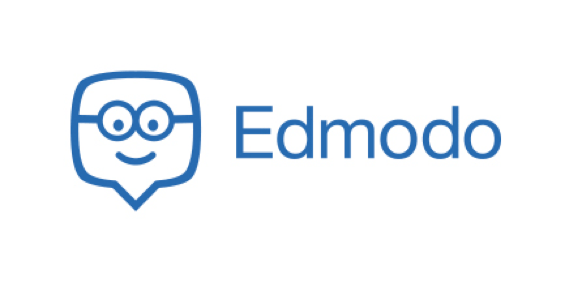
The Edmodo Business Model
Two school district employees and a software engineer founded Edmodo back in 2008. The idea behind the project was to create a platform where struggling with technology teachers and their students could easily collaborate with one another. Today the platform counts 112 employees and is used by 77 million users in more than 370 000 schools worldwide.
The platform operates under a freemium model: both students and teachers register for free and pay just for additional functionality and services (the Edmodo app marketplace, training and development services).
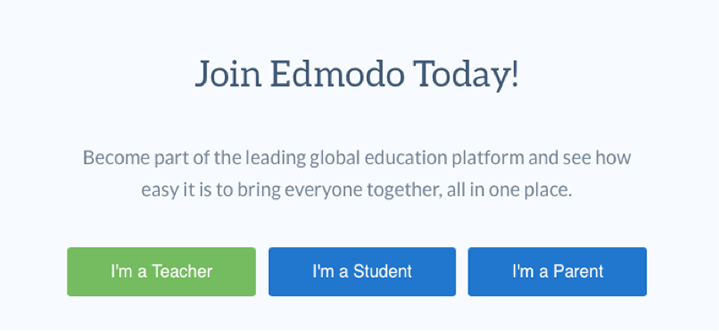
How to apply it to your eLearning business?
The Edmodo Company succeeded because it targeted teachers who were looking for tools to improve teacher-students communication and gave them the so called “Facebook” for classrooms. Since the platform was free to use and the functionality met the teachers’ demands, the word-of-mouth had shot bolt and helped the company attract thousands of new educators. Once the teachers were onboard attracting schools had no difficulty.
Creating Content for Universities or Other Teachers
Another way for teachers to earn money is to sell the content and the learning resources they create to other teachers and educational institutions. The Teachers Pay Teachers marketplace is a case in point.
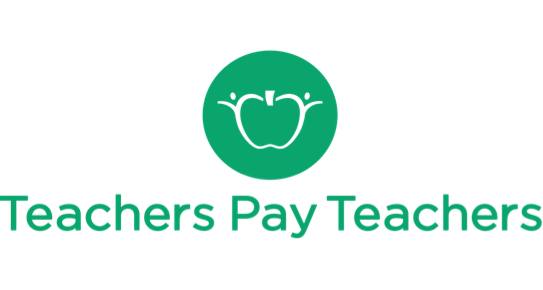
The Teachers Pay Teachers Business Model
Teachers Pay Teachers is an open online marketplace where teachers buy and sell their learning materials. The founder – Paul Edelman, who was a public school teacher, wanted to help teachers make money from the materials that gathered dust, and the idea to create a website came into his mind. The fact that over 4 million teachers worldwide visit the marketplace and there are over 2.4 million available resources is the most compelling evidence that the idea was great.
The website uses a subscription-based business model (a 15% commission with a premium $59,95 membership and 40% with a free membership).
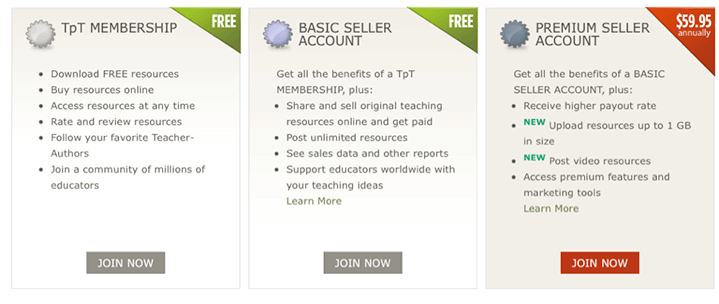
How to apply it to your eLearning business?
The popularity of the Teachers Pay Teachers platform is explained by the fact that teachers trust each other more than some unknown content providers and publishers. To put it differently, the content teachers sell is tested in the classroom and corresponds with the industry standards.
The founder monetized the exchange between teachers and created not only a marketplace but also a global community of teachers, where they could learn from one another.
Giving Education for Free and Generating Donations
The idea of a free, world-class education for everyone is quite popular nowadays.
The most famous example of a platform spreading knowledge for free is Khan Academy.
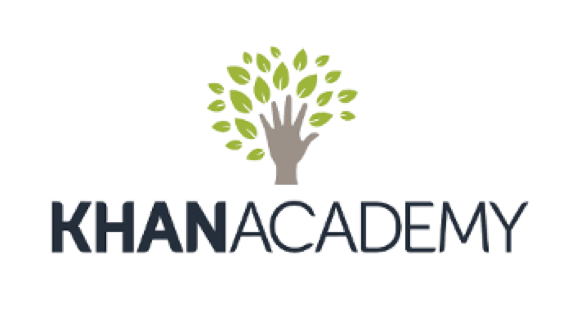
The Khan Academy Business Model
Khan Academy started back in 2006 as a collection of math and science video tutorials its founder Salman Khan created for his cousin. Today the company employs 150 people while the Khan Academy website serves more than 15 million people watching over 100 000 educational videos a month in 36 languages. The company is non-profit and is supported by donations only.
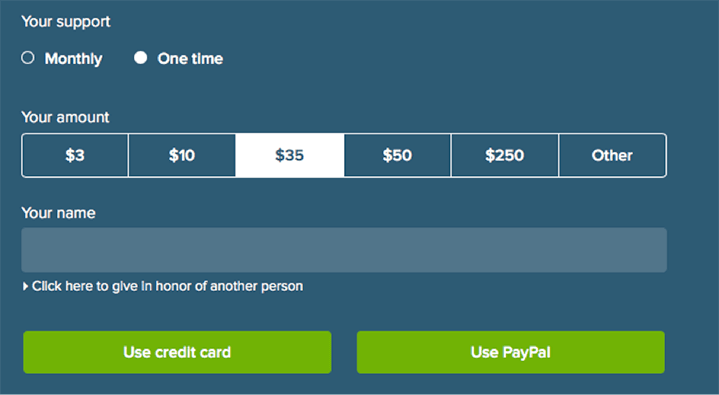
How to apply it to your eLearning business?
The idea behind Khan Academy wasn’t new (have a look at Wikipedia for example), what was new the content format and the way it was delivered (free and what is more important interactive online videos that make people like to learn). Owing to the fact that Salman followed his passion, not money he revolutionized the world of education.
Open Courses, Building MOOC Platforms
A classic reimbursement model of online degree programs is when students pay for attending online courses. However, many leading universities nowadays provide free access to the learning materials taught by the in-house professors to expand access to education. Even though students don’t get credits or degrees they receive access to high-quality education.
Websites like Coursera, Udacity and EDX are known for providing free online courses from their university partners and getting revenue through verified certifications students pay for when the course is successfully completed. The platforms take a part of the revenue generated by the courses offered through the platform and work with universities to produce more courses.

The Coursera Business Model
Coursera is a well-known MOOC (massive open online courses available over the Internet to millions of people) provider with the largest variety of courses available. Founded in 2012, Coursera today counts 149 university partners and more than 26 million registered learners who take around 2000 courses.
https://embed.ted.com/talks/daphne_koller_what_we_re_learning_from_online_education
The revenue comes from selling verified certificates (so called “Signature Track”), offering a Specialization program (a sequence of courses a student needs to take to earn required skills), charging for human training if a student struggles with the subject, providing employee-training programs, networking opportunities for employers and recruiters and charging for course grading assignments.
How to apply it to your eLearning business?
There are several monetization strategies Coursera applies. Instead of charging for certificates only, Coursera diversifies the services offered hereby enhancing customer satisfaction, spreads the message to a new audience and obtains a sustained growth.
Now, let’s turn to selling online courses online:
Online Courses Business
When the conversation drifts to selling courses online there are two options to do so:
- Sell courses on online courses marketplaces;
- Sell courses on your own website.
Sell Courses on Online Courses Marketplaces
By selling courses on third-party platforms you don’t deal with website management, domain, hosting and other activities associated with running one’s own business. No need to deal with marketing, SEO, Branding and attracting traffic. The online marketplaces do everything for you.
Where is the catch? – The revenue share, which can be up to 50% depending on the course-purchasing scenario (organic course sale, instructor coupon use, affiliate sale, advertising campaign etc.). Instructors, selling courses on such third-party platforms, say that communication with students might get messy when you teach several courses at once. Moreover, you don’t own the students’ data and are not allowed to collect students’ emails to use elsewhere.
Sell Courses on Your Own Website
When you sell courses on your own website, you deal with website management and all the associated marketing, PR and SEO activities, but all the generated profit belongs to you. And what is more important, you have full control over the users’ data.
To manage and deliver online courses you need a Learning Management System that can be either installed on your website (On-Premise Solutions) or hosted in the Cloud (SAAS solutions)(to learn more about LMS software and their types we recommend reading the guide How to Select a Learning Management System?).
What is good about selling courses on your own website is that you can differentiate your business from competitors and realize a unique idea third-party platforms don’t allow.
For example, let us bring up an example of Ticken, a custom eLearning project developed on the basis of the JoomlaLMS Learning Management System.
The project started as a small online touch-typing project and grew into a well-known touch-typing program used in dozens of schools in Holland and abroad. The project succeeded because there was a unique idea behind it. The founder didn’t just buy an off-the-shelf Learning Management System as everyone else did; the LMS was highly customized to meet a unique business idea and kids’ needs.
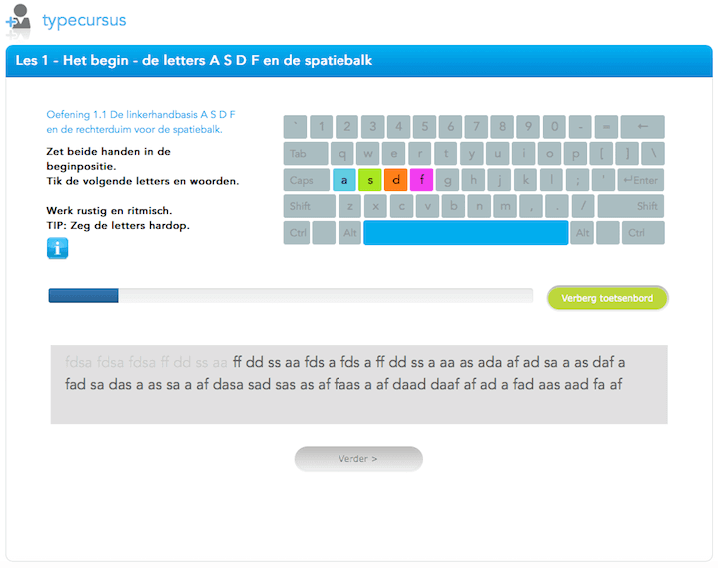
How to apply it to your eLearning business?
Let’s move on now to online and corporate training business options.
Online and Corporate Training Business
Being a Corporate Instructor
Since more and more companies nowadays understand the importance of employee training and development the demand for qualified corporate and training providers is growing tremendously.
Why?
Because asking senior employees to train newcomers or hiring a third-party company with zero understanding of your internal business processes and needs are no longer the options. Classroom training or attendance of seminars and lectures in their turn don’t correspond with the employees’ heavy workload and busy appointment schedule.
For those very reasons, companies hire in-house corporate trainers to develop online training programs that help companies prepare employees for constantly changing business needs and market demands.
Therefore, you can either become a corporate instructor or set up a company specializing in courses on safety training, customer service, risk management, stress management etc.
Being an Online Coach or a Personal Trainer
Online personal training is growing in popularity: more and more trainers and fitness instructors offer online versions of their training while more and more people from all over the world want to get a chance to be trained by skilled trainers.
Online personal training is in no way different from a traditional one, with tailored exercises and nutrition programs, except for one point – there is no instructor nearby. There are both adherents and opponents of such kind of training but if you are a trainer or a fitness instructor moving your training program online is an effective way to grow the client base and get an additional income source.
Other Ways to Make Money in the ELearning Market
Among other ways to make profit in the eLearning market are the following:
Becoming an LMS Administrator
An LMS administrator deals with LMS installation, management and maintenance. Since distant education is in demand, more and more companies are looking for a person to administer their Learning Management Systems. If you possess the required technical background, you can become an administrator of Open-Source or On-Premise Learning Management Systems.
Becoming an LMS Reseller
There are over 700 Learning Management Systems on the market. Many of them offer reselling programs – representation of the company in local markets. Instead of developing your own LMS and investing money and resources in its promotion and marketing you can become a reseller of an LMS with a well-known name and reputation.
Becoming an Edtech Consultant
Since there are a variety of edtech solutions available on the market, finding the one is quite complicated. Many people, instead of wasting time on looking for the right software, prefer hiring edtech consultants who help with the search based on the company’s needs and budget.
If there is one thing we’ve learned from 11 years’ experience in the eLearning market is that the potential of the eLearning industry is immense and there is bound to be more demand in the coming years.
We really hope that the variety of best practices and actionable tips we’ve provided in the article will help your business stand out and build lasting assets.
What to read next?
Horrible Mistakes that Can Cost Your ELearning Business Millions
15 Podcast Episodes to Help you Launch a Successful Online Courses Business
What 6 ELearning Business Owners Wish They Had Done Differently
25 Blogs for Someone Who Wants To Become an ELearning Professional


